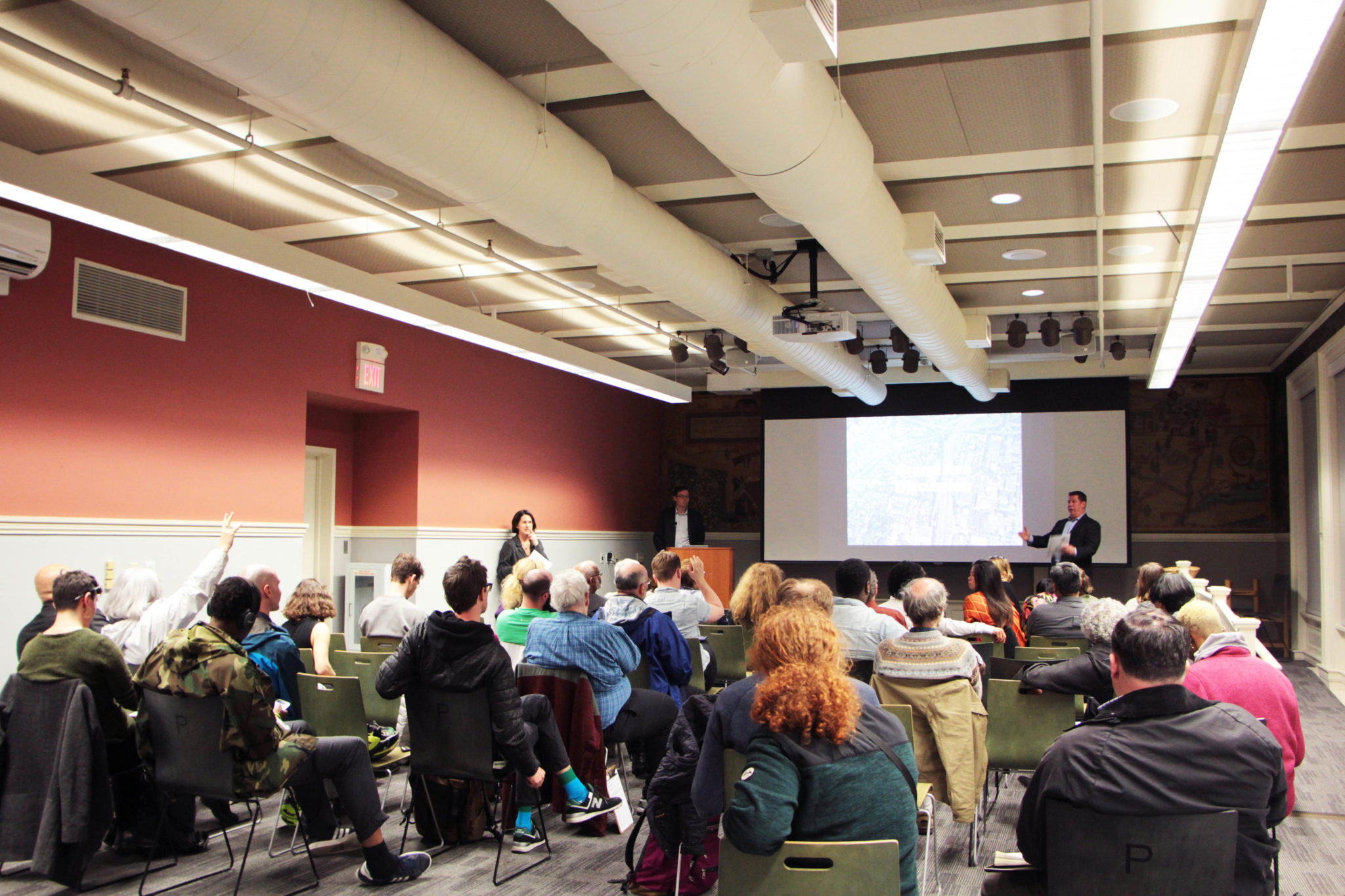
Angela Xiao
New Haven’s new City Plan Commission director hit the ground running Monday — her first day on the job.
Aicha Woods, the recently appointed director, delivered a presentation on zoning and development in three of the Elm City’s key corridors and answered questions about a persistent point of contention for New Haven — how to balance economic development and affordability.
“One of the limitations [to economic development] we’ve heard over and over again is the zoning,” Woods told attendees at the beginning of the presentation. “[We hope for] connections between downtown and these neighborhoods.”
City staffers presented zoning concepts and proposals for three of New Haven’s commercial corridors on Dixwell, Grand and Whalley avenues. At the meeting, officials provided updates and options to about 30 attendees and listened to feedback. They also hosted discussions specific to each of the three corridors and highlighted potential methods of growth — all largely through the revision of zoning codes. Attendees — which included two candidates looking to challenge Mayor Toni Harp in this year’s election — grilled Woods and her team on whether the proposed zoning would take into account low-income individuals and their housing needs, particularly in the specific corridors’ traditionally affordable neighborhoods.
The city’s zoning laws — which dictate how land throughout the city can be used — have not been thoroughly updated since the middle of the 20th century. As city staffers stressed, these laws have largely been impediments to the growth and development that would fit New Haven’s current needs.
New Haven’s zoning, unlike that of most urban areas, favors the separation of land uses, city staffers explained. Such codes tend to keep, for example, the construction of mixed-use developments minimal. The city’s current zoning laws also prioritize one metric specifically: floor area ratio, which compares square footage to size of the land parcel without regard for other factors that can vastly change a building, such as height or yard space.
The corridors on Grand and Dixwell avenues — the stretches of streets leading into the downtown area — are both currently listed as BA zones, while the Whalley Avenue corridor currently is zoned as BB. BA and BB designations are almost identical, though the latter allows for more automotive businesses. Both designations limit floor area ratio occupancy in the neighborhood to 2.0. The primary concrete proposal on Monday was to designate all three corridors in question as BD — the current zoning for downtown — which would raise the floor area occupancy to 6.0 and remove other requirements such as parking spaces.
City staffers stressed that all proposals and graphics were merely ideas and that the primary purpose of the meeting was for “discussion.” While the staffers said that they only sought to receive feedback, some attendees were skeptical.
Frederick Streets, a senior pastor at the Dixwell Congregational Church — which is located in the proposed Dixwell corridor — called into question city officials’ “asking people for input [when] there’s already things going on.” Given that the city has already decided major planned developments in his neighborhood, Streets questioned how much city residents’ voices mattered relative to those of developers or other entities.
Grand, Dixwell and Whalley avenues are all populated neighborhoods, and proposals to change zoning and initiate development would affect their current populations. Attendees were particularly concerned about issues surrounding affordability and housing. New Haven has long struggled with striking the right balance between new economic development and affordable housing.
Kerry Ellington, a local community organizer, pointed out that all three areas are currently far more accessible than other neighborhoods. Ellington explained that despite the city touting several new developments — many of them publicized as including affordable units — in recent years, she herself could “not afford” most of them.
Beyond disputes over what the definition of “affordable housing” ought to be, attendees seemed to agree with Ellington that the city must answer the question of how measures such as increasing building density would impact housing for those at the lowest end of the income scale.
Although city staffers said that those were issues that would continue to be taken into account, some in attendance questioned how such fundamental issues could be separated from any questions related to development in the region.
Johnny Shively, a member of the Downtown-Wooster Square Community Management Team, called any discussions over the future of development in the corridors that did not address questions of accessibility “an incomplete conversation.” Discussions on development in the neighborhoods, he said, needed to include “answers [as to] how we are going to protect low-income residents.”
The city of New Haven includes 18.7 square miles of land.
Angela Xiao | angela.xiao@yale.edu







